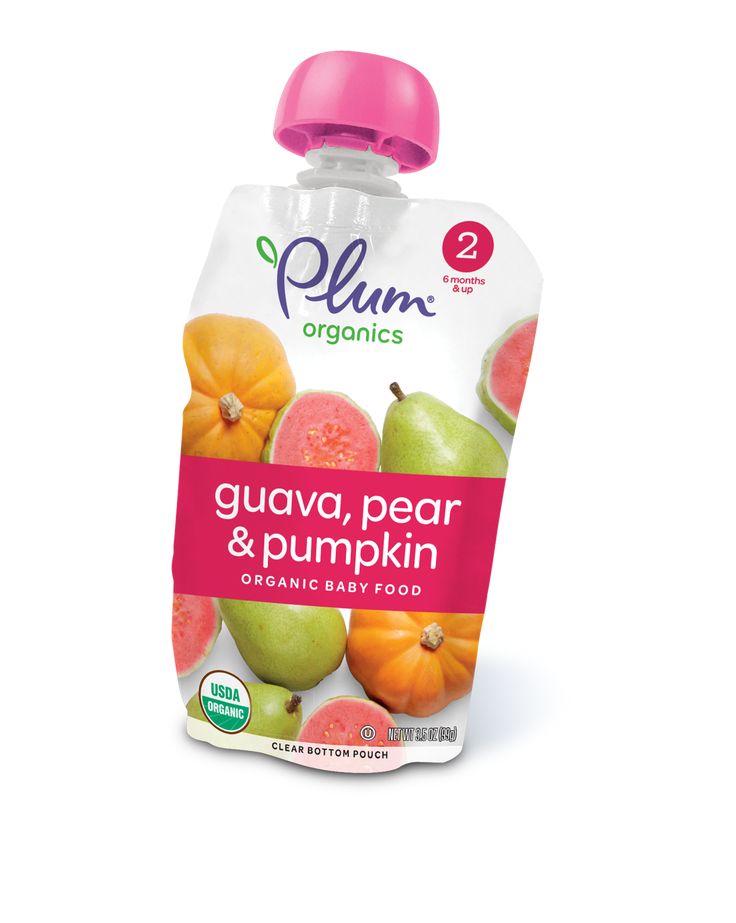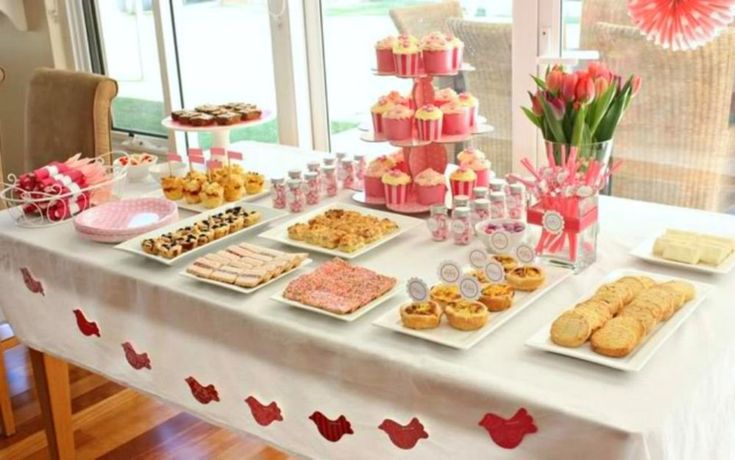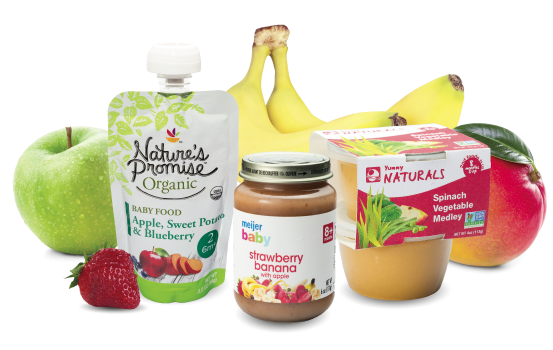Podee hands free baby feeding system
BPA-Free Hands-Free Baby Bottle for Parents
Hands-Free Baby Bottle System
Podee Baby Bottle Benefits
Helps Prevent Gas
Helps Prevent Colic
Feed Hands-Free & Upright
BPA & Lead Free
The Podee® Baby Bottle is a welcome solution to today’s busy, on-the-go parents. When it comes to feeding your baby, there is no better hands-free option.
The Podee® Baby Bottle is a complete system that includes an 8-ounce BPA-Free baby bottle and all the necessary parts. It ends dropped bottles and allows for upright feeding to help reduce ear infections and colic. Parents have found it to be very reliable in feeding infants with challenges as well. Our parents love to use the Podee® baby bottle in strollers, car seats and bouncies; or whenever they need an extra hand.
Our unique, adaptive flow system allows the baby to manage the pacing and amount of flow with ease, making feeding time with the Podee bottle, always a pleasure.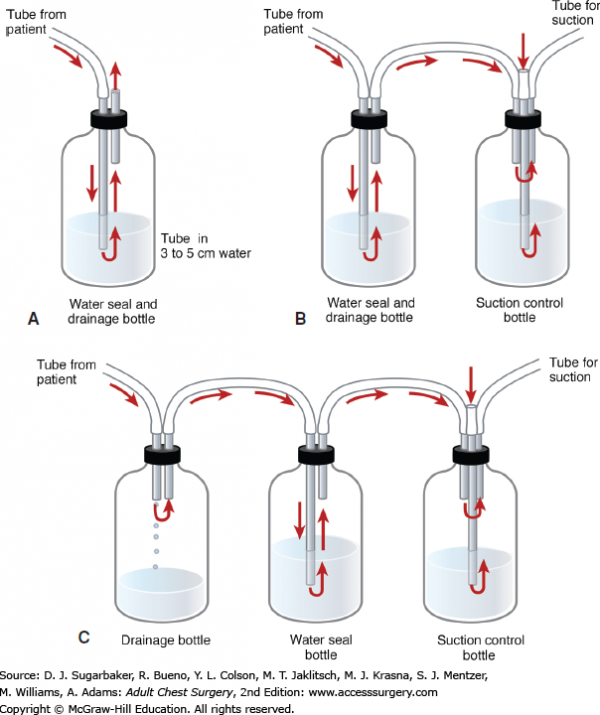
Even Oprah had immediate success with the Podee bottle when she helped a mother of 4-month old quadruplets during feeding time on her show.
Our baby bottles are BPA-Free and Lead-Free.
The Podee® Baby Bottle is the original hands-free feeding system. We have over 20 successful years on the market.
Want to hear from all of our happy users? Just read our parent testimonials.
Become a distributor or shop today at one of our fine online retailers.
Happy travels!
The Podee® Team
The Smart Baby Bottle
The Podee Hands-Free Baby Bottle is the smart solution for anyone on the go and wanting to help prevent gas and colic.
BPA & Lead Free
All of the Podee Baby Bottle products are manufactured to be BPA and lead free to keep your baby safe.
Existing Baby Bottle System?
The Podee Baby Bottle product line has kits to convert your existing baby bottles into a hands-free bottle.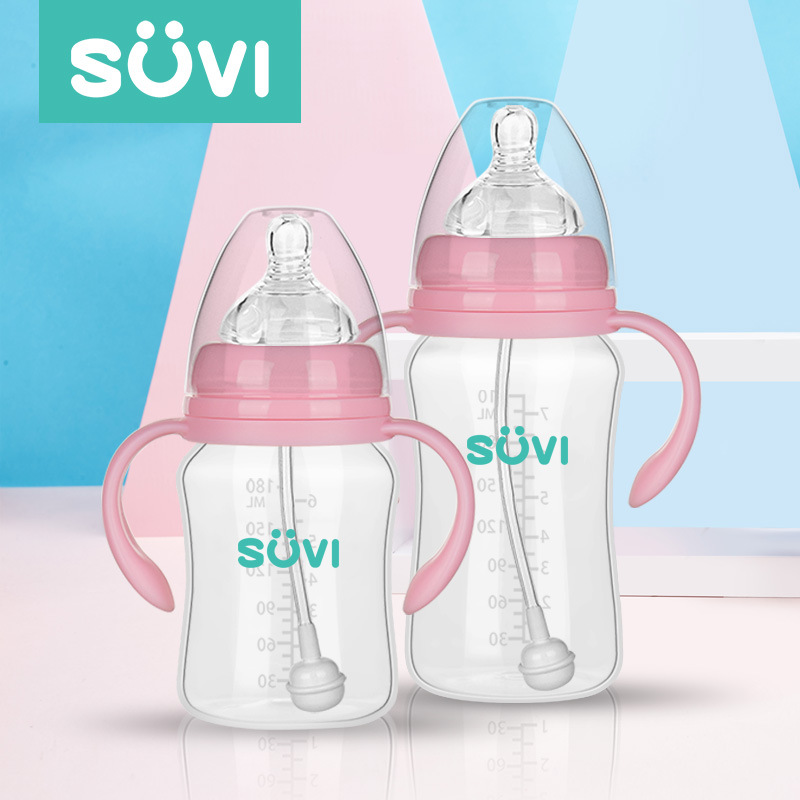
What People Are Saying
"I LOOOOOOOOVE my Podee®! I just got it yesterday and it's already my favorite baby accessory!! We're out and about quite a lot, and trying to feed my 6-month-old in the backseat and driving just didn't quite work. He's much happier with his Podee® and so am I! Thanks for coming up with a GREAT product!!"
Become A Distributor
Parents and caretakers everywhere love the Podee Baby Bottle! Become a distributor/wholesaler for your area to make sure there are always Podee products available. Click Here to learn about becoming a distributor.
Contact Us
Mailing Address
PO Box 502754
San Diego, CA 92150
Copyright © 2009-2022 - Podee International | Web Design by White Wonder Studios | Powered by SCN | Legal
Podee Hands-Free Baby Bottle Reviews – Viewpoints.com
22 reviews
5
Amazing! Game changer! My 8 month old was refusing bottles and barely drinking anything. I read somewhere that they get too bored to drink lying down…so thought I'd give these a try. And wow! Smashed her bottle and her little smiles because she's doing it herself are beautiful! After reading the reviews, I saw that a few people have had issues with it….re this…I think baby needs to be big enough to suck firmly. I suck the first bit of milk through the tube to create the vacuum and away she goes no problem. The other is the tube becoming clogged with powder. I don't put the tube into the bottle until I've given the formula a good shake and is fully dissolved. I don't know if a thickened formula would work as well for obvious reasons.
I read somewhere that they get too bored to drink lying down…so thought I'd give these a try. And wow! Smashed her bottle and her little smiles because she's doing it herself are beautiful! After reading the reviews, I saw that a few people have had issues with it….re this…I think baby needs to be big enough to suck firmly. I suck the first bit of milk through the tube to create the vacuum and away she goes no problem. The other is the tube becoming clogged with powder. I don't put the tube into the bottle until I've given the formula a good shake and is fully dissolved. I don't know if a thickened formula would work as well for obvious reasons.
Alannarogers1
Australia
true
1
This bottles were a good idea, but it just doesn't work. I tried these with my son because I thought it would be helpful. I have three kids, and I'm in school. I am always so busy, and I need any help I can get! I thought I would be able to lay him beside me while I'm doing my school work on the bed. He could pretty much feed himself while I wrote papers. It was a nice concept, but this bottle was just ridiculous. First, the nipple kept falling out of his mouth. I would have to pick it up and put it back in every couple of seconds. Second, he could not suck on the nipple hard enough to get the milk to come down the tube. He wasn't able to do that until he was about 6 months old. By the time he was that age, he was able to roll over. I would put it in his mouth, and he would roll over and it would fall out again. On top of these bottles not working, I read that they are dangerous because they are a choking hazard. A baby should never have a bottle in their mouth without someone holding it. Do not buy these!
I have three kids, and I'm in school. I am always so busy, and I need any help I can get! I thought I would be able to lay him beside me while I'm doing my school work on the bed. He could pretty much feed himself while I wrote papers. It was a nice concept, but this bottle was just ridiculous. First, the nipple kept falling out of his mouth. I would have to pick it up and put it back in every couple of seconds. Second, he could not suck on the nipple hard enough to get the milk to come down the tube. He wasn't able to do that until he was about 6 months old. By the time he was that age, he was able to roll over. I would put it in his mouth, and he would roll over and it would fall out again. On top of these bottles not working, I read that they are dangerous because they are a choking hazard. A baby should never have a bottle in their mouth without someone holding it. Do not buy these!
kaylan5838
USA
false
5
I purchased a couple of these from a local consignment shop near home when our daughter was about 3 weeks old and having trouble with gas.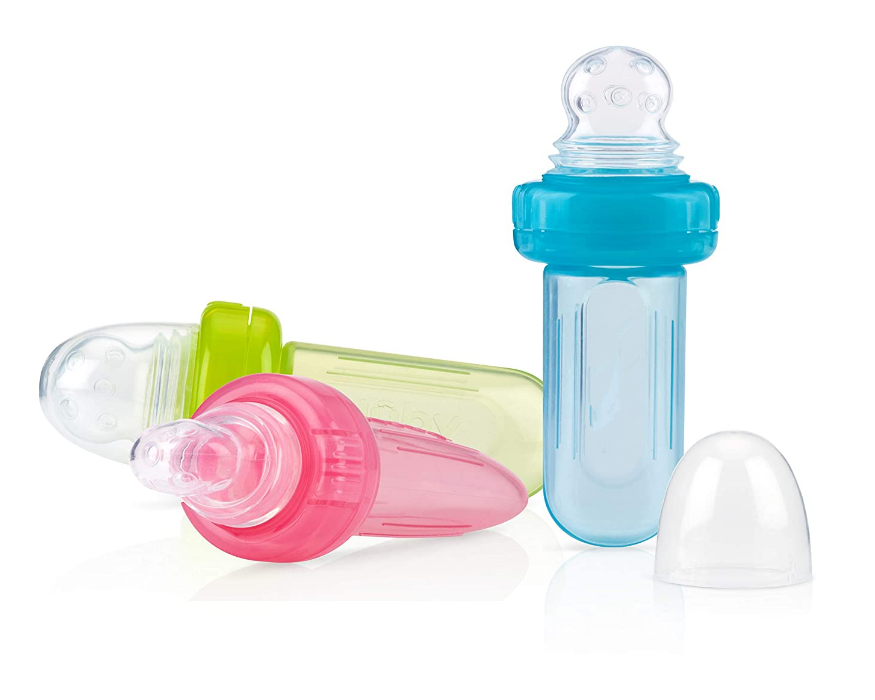 I thought it was worth a shot and might bring me a little peace and quiet. They were one of the most wonderful choices I had made to ease her tummy troubles. They completely stopped her from swallowing too much air during feedings. This system works great when your busy or just on the go. We used it a lot during car rides when we were traveling to and from places. They were very easy to clean and sanitize with the small brush that was included in the box. This bottle system was extremely durable and we never had any problems with them leaking. The bottle system works with most standard 8 ounce bottles. The only down side to this was that it didn't work so well with the smaller 4 ounce size bottles. But with a little snip of the lower tube we were able to use them with smaller bottles. This is definately a great product to have.
I thought it was worth a shot and might bring me a little peace and quiet. They were one of the most wonderful choices I had made to ease her tummy troubles. They completely stopped her from swallowing too much air during feedings. This system works great when your busy or just on the go. We used it a lot during car rides when we were traveling to and from places. They were very easy to clean and sanitize with the small brush that was included in the box. This bottle system was extremely durable and we never had any problems with them leaking. The bottle system works with most standard 8 ounce bottles. The only down side to this was that it didn't work so well with the smaller 4 ounce size bottles. But with a little snip of the lower tube we were able to use them with smaller bottles. This is definately a great product to have.
carroll1122
USA
true
5
I was so thrilled once I discovered the Podee bottle system. they are now my go to gift for baby showers! Child's Comfort Nothing could be more comfortable than these podee bottles. The tubing attaches to the nipple so the wight of it is not more than a pacifier. Its perfect for tiny hands to pick up and hold. Leak Prevention My daughter never had a single leak while using these bottles. The tubing is air tight and creates a vacuum seal when installed properly. Ease of Cleaning Everything is easy to clean except the tubing. The way I did those was to boil some water and allow the tubes to soak in the hot water for about five minutes. After that I allowed the tubes to air dry. For the rest of the parts I put them in the top rack in a baby cage container and everything cleaned right up. Keeps Air Out From what I can tell they did a good job in keeping the air out. The only issue I ever had was getting the milk sucked into the nipple at the beginning of each feeding. For this I would have to suck on the nipp to get the liquid into the tub so my baby wasn't sucking on air.
they are now my go to gift for baby showers! Child's Comfort Nothing could be more comfortable than these podee bottles. The tubing attaches to the nipple so the wight of it is not more than a pacifier. Its perfect for tiny hands to pick up and hold. Leak Prevention My daughter never had a single leak while using these bottles. The tubing is air tight and creates a vacuum seal when installed properly. Ease of Cleaning Everything is easy to clean except the tubing. The way I did those was to boil some water and allow the tubes to soak in the hot water for about five minutes. After that I allowed the tubes to air dry. For the rest of the parts I put them in the top rack in a baby cage container and everything cleaned right up. Keeps Air Out From what I can tell they did a good job in keeping the air out. The only issue I ever had was getting the milk sucked into the nipple at the beginning of each feeding. For this I would have to suck on the nipp to get the liquid into the tub so my baby wasn't sucking on air. Durability These bottles and all their parts are very durable and no damage has occurred while using them!
Durability These bottles and all their parts are very durable and no damage has occurred while using them!
abstylist
USA
true
5
I can not stress to you how much I loved this bottle! I told every mom or mom to be about these bottles! My husband and I traveled a lot or were running errands often and these were amazing. Fill it up with formula and sit the bottle up right and the baby will latch on. What could be more wonderful than a hands free bottle! They are pricy for one bottle but I thought they were worth it, I even bought them as baby shower gifts! My son did great with them but I will say if your baby is sensitive or needs a bottle that blocks air this may not be right for you. If the formula runs to low it will allow the baby to suck air through. Also, my son had a bad habit of pulling the tube because it was pretty long but quickly learned he touches it he will not eat.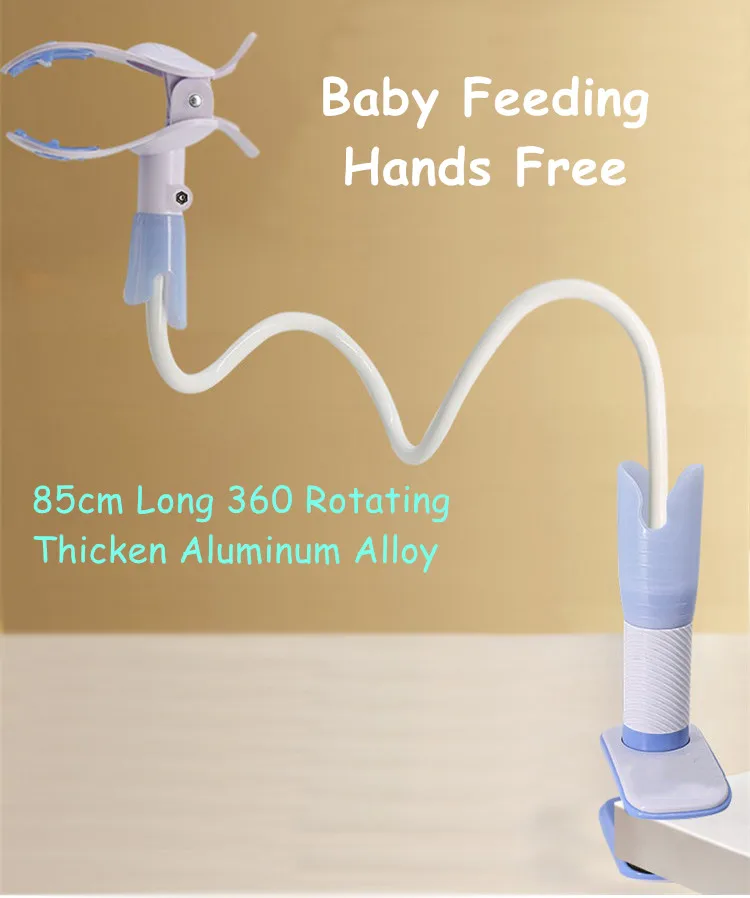 Although, this bottle also prevents ear aches because the baby will not be laying down while drinking. It is amazing for car rides! Child's Comfort My son loved them! Leak Prevention It fell over several times and we never had a problem with leaks. Ease of Cleaning The tube is not fun to clean and is fairly complicated.
Although, this bottle also prevents ear aches because the baby will not be laying down while drinking. It is amazing for car rides! Child's Comfort My son loved them! Leak Prevention It fell over several times and we never had a problem with leaks. Ease of Cleaning The tube is not fun to clean and is fairly complicated.
jessica25631
USA
true
5
This was a lifesaver in so many different situations! I could set the bottle up for my son when we were out and about shopping, or driving in the car without having to pull over or go home immediately just because he was hungry. It definately taught him how to be more self sufficent as well which lets be serious, what mom does't want for their kids? Instead of listening to you baby scream all the way home, GET A PODEE to save your eardrums and help your baby out. I promise, it will help your anxiety. Leak Prevention if tilted sideways it would leak a little, but i guess all bottles would a little right? Ease of Cleaning It has a lot of parts which can be time consuming to clean, but with how much it can prove to be a lifesaver I think it was worth it!
I promise, it will help your anxiety. Leak Prevention if tilted sideways it would leak a little, but i guess all bottles would a little right? Ease of Cleaning It has a lot of parts which can be time consuming to clean, but with how much it can prove to be a lifesaver I think it was worth it!
RoxanneMeder
USA
true
5
If you've ever been in the car or busy with the other kids and haven't had the time to sit and feed the baby this bottle is for you. I wouldn't rcommend always setting baby down for meals but sometimes you just don't have the option to hold them and these bottles keep them from getting air and just make life easier in general.
chrissysmom
Fresno, CA
true
5
This is the most amazing little invention know to parents. We had 3 children and were suprised by a fourth pregnancy last year. I found out I was having twins very early on and knew I had to continue working. My husband is a stay at home dad, and I knew he would have a really hard time taking care of the 4 little kiddos (3 in diapers!). We were introduced to the Podee bottle by a twins club my husband and I joined. Its amazing! Im sure we wouldve gotten through the bottle year okay, but the Podee made it so much easier. We were able to feed them sitting up. We were able to hold them both while they drank their bottles. They were able to drink their bottles in the car since we could just stick their bottles next to them in their car seat. And no spills! It comes with a tiny brush to clean out the tube. Cleaning is easy as long as you IMMEDIATELY rinse everything and run the brush through the tubing really quick. Then we would stick everything in the dishwasher at least once per day to sanitize. Our #1 baby item for sure!
We had 3 children and were suprised by a fourth pregnancy last year. I found out I was having twins very early on and knew I had to continue working. My husband is a stay at home dad, and I knew he would have a really hard time taking care of the 4 little kiddos (3 in diapers!). We were introduced to the Podee bottle by a twins club my husband and I joined. Its amazing! Im sure we wouldve gotten through the bottle year okay, but the Podee made it so much easier. We were able to feed them sitting up. We were able to hold them both while they drank their bottles. They were able to drink their bottles in the car since we could just stick their bottles next to them in their car seat. And no spills! It comes with a tiny brush to clean out the tube. Cleaning is easy as long as you IMMEDIATELY rinse everything and run the brush through the tubing really quick. Then we would stick everything in the dishwasher at least once per day to sanitize. Our #1 baby item for sure!
oregonphotomom
Beaverton, OR
true
5
I received this as a gift, and was skeptical at first. The nipple is attached to the bottle through a long tube. My friend showed me how to use it, and I was hooked! My baby was in his carseat, and I could tuck the bottle under his arm, put the nipple in his mouth, and he feeds himself! Great for when you are driving and baby is hungry, or when you need your hands for something else. I went back to the store and bought 4 more. I also recommend them to all my friends and buy them for gifts for soon to be mom's. It was definately a woman who created this product! Also, it comes with a tool that looks like a pipe cleaner, to clean the tube. works great!
toli77
Yonkers, NY
true
5
These bottles were an absolutel life and sanity saver.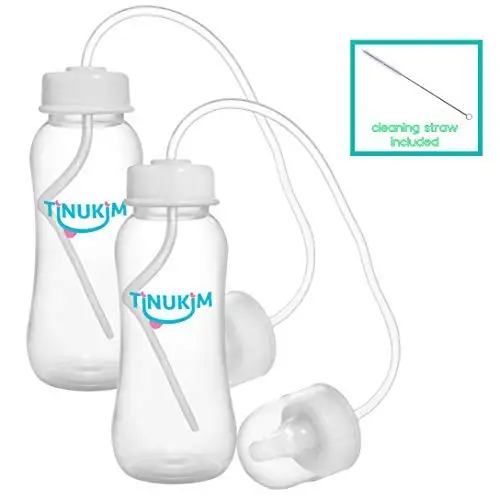 Had I not had these bottles, I would have been completely lost. These bottles allowed me to feed both babies at the same time and with little effort so I was able to focus more on them and not on handling the bottles. They were never gassy, or fussy and no colic either. Once they could hold their own bottles, it was great to transform them into 'sippy-cup' like bottles so their necks weren't strained backwards. I always buy these bottles for all my friends who are having babies, singletons or multiples. Absolute must for parents!
Had I not had these bottles, I would have been completely lost. These bottles allowed me to feed both babies at the same time and with little effort so I was able to focus more on them and not on handling the bottles. They were never gassy, or fussy and no colic either. Once they could hold their own bottles, it was great to transform them into 'sippy-cup' like bottles so their necks weren't strained backwards. I always buy these bottles for all my friends who are having babies, singletons or multiples. Absolute must for parents!
lovenlifeinvegas
Las Vegas, NV
true
4.2 23
82.6
- Follow us
©2006-2023 Viewpoints. All rights reserved.
Various breastfeeding positions
Try different breastfeeding positions to find the one that works best for you and your baby.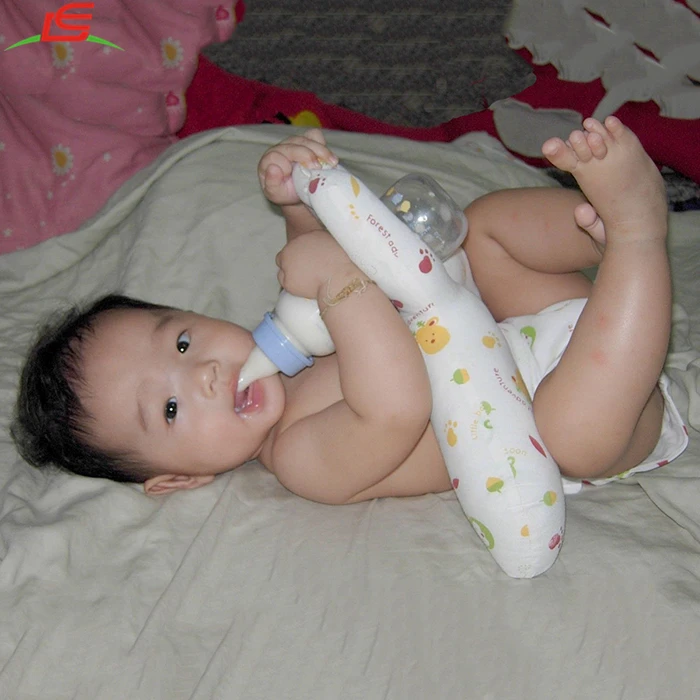 You can see the options in our selection of photos
You can see the options in our selection of photos
Share this information
There is no right or wrong way to hold the baby while
feeding, and mom and baby are sure to find their favorite position.
It is important that both you and your child feel comfortable. 1.2 It's good to learn a few different breastfeeding positions and techniques because life's circumstances often require us to be flexible, especially as your baby gets older and you start to leave the house more often.
Whatever position you choose to breastfeed your baby, remember a few simple rules.
- Prepare everything you need before feeding, including drinks, food, mobile phone, TV remote control, book or magazine. And do not forget to go to the toilet - the feeding process can take a long time!
- Make sure your baby is comfortable. Whichever position you choose, it's important to keep your baby strong, level, and provide good support for their head, neck, and spine.
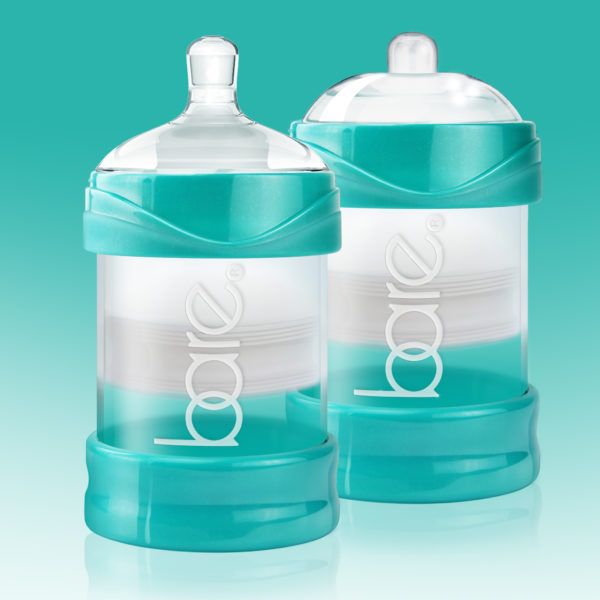
- You should also be comfortable. Don't stress. If necessary, use pillows of different sizes or rolls of towels to support your back or arms.
- Make sure your baby is latching on correctly. Proper grip is the key to comfort when breastfeeding.
- If your baby does not latch on well or you experience pain while feeding, contact a lactation consultant for help. The specialist will also be able to show you how to hold your baby more comfortably.
1. Relaxed feeding or reclining position
The relaxed feeding position, also known as biological feeding, 1 is often the first position for most mothers. If, immediately after birth, the baby is placed on the mother’s chest or stomach, normally, he instinctively reaches for the breast and tries to grab the nipple. This phenomenon is known as the breast seeking reflex. Skin-to-skin contact stimulates the infant's feeding instinct, and gravity helps him to latch onto the breast and maintain balance.
But it's not just newborns that can be fed in the reclining position - this position is great for babies of all ages. It can be especially helpful if your baby does not latch well in other positions or does not like to be touched during feeding, and also if you have too much milk flow or too large breasts. Isabelle, a mother from the UK, shares her experience: “I had large breasts, and the baby was born small - 2.7 kg, so it was not easy to find a comfortable position at first. After a few weeks, it became clear that there was no “correct” posture for me. As a result, I most often fed lying down, putting the baby on my chest. ”
It is more convenient to feed not lying flat on your back, but half-sitting, leaning on pillows. So you will have a back support and you will be able to watch the baby during feeding.
2. Cradle position
This is the classic
first thought of breastfeeding. Mom sits straight
, and the baby lies on her side on her arm, pressing his stomach against her stomach. 3 Although this is a very popular position, it is not always easy to master with newborns because it gives the baby less support. Try putting a pillow under your back, and put a special breastfeeding pillow on your knees and lean on it with your hands. So you can more reliably support the child, without overstraining your back and shoulders. Just make sure that the baby does not lie too high on the pillow for feeding. The breast should remain at a natural level so that the baby can grab it without effort, otherwise sore nipples cannot be avoided.
“I breastfed in the cradle position because it suited me perfectly! It was comfortable and I loved just sitting and looking at my little one,” recalls Rachel, a mother of two from Italy.
3. Cross Cradle
This breastfeeding position looks almost the same as Cradle, but the baby is on the other arm. 3 This gives your baby support around the neck and shoulders so he can tilt his head to latch on. This position is great for breastfeeding newborns and small babies, as well as for babies who do not latch well. Since the baby lies completely on the other hand, it becomes easier to control his position and you can adjust the chest with your free hand.
Julie, a UK mother of two, finds this position very practical: “I usually breastfeed my youngest in the cross cradle position. So I have a free second hand, and I can take care of an older baby at the same time. ”
Do not hold the baby's head at first, otherwise you may inadvertently press his chin against his chest. Because of this, the child will not be able to take the breast deeply, because the nipple will rest against the base of the tongue, and not against the palate, which will lead to inflammation of the nipples. As the child grows, this position becomes more comfortable, and he can rest his head on your palm (as shown in the photo above).
4. Underarm breastfeeding
In this position, also known as the “ball grip”, the mother sits with the baby lying along her arm at the side, legs towards the back of the chair (or any other seat). 3 Another comfortable position for newborn breastfeeding, you can give your baby good support, full control of his position and a good view of his face. And the baby feels safe in close contact with the mother's body. This position is especially good for those who have had a caesarean section or a premature birth, as well as mothers of twins and women with large breasts.
“When I breastfed my first daughter, I had very large K-sized breasts—twice the size of her head,” recalls Amy, an Australian mother of two. - I put rolls of towels under each breast, because they were very heavy, and fed my daughter in a pose from under the arm, but only sitting straighter so as not to crush her. This position was also convenient because I had a caesarean section and could not put the baby on my stomach.”
5. Side-lying position
The side-lying position is ideal for a relaxed
nighttime feeding in bed or on the couch. If you had a
caesarean section or ruptures during childbirth, this position may be more comfortable than sitting down. 3 In this position, mother and baby lie side by side, tummy to tummy.
“It was difficult for me to sit during endless night feedings, firstly because of the caesarean section, and secondly because of lack of sleep,” recalls Francesca, a mother from the UK. “And then I discovered that you can feed your baby lying on your side and rest at the same time.”
“Because of the short tongue frenulum, Maisie could only properly latch on to her breasts while lying on her side. The lactation consultant showed me how it's done. In this position, the flow of milk was optimal for my daughter, and it was easier for her to keep the nipple in her mouth. As she got older, she became much better at grabbing her breasts in normal positions,” says Sarah, mother of two from Australia.
6. Relaxed breastfeeding after caesarean section
If you can't find a comfortable position for breastfeeding after caesarean section, 3 try holding the baby on your shoulder in a reclining position – this does not stress the postoperative suture and allows you to breastfeed your baby comfortably. You can also try side feeding.
7. Sitting upright breastfeeding or “koala pose”
When breastfeeding in an upright position or “koala pose”, the baby sits with a straight back and a raised head on the mother's hip. 4 This position can be tried even with a newborn if it is well supported, but it is especially convenient for feeding a grown child who can already sit up by himself. The upright sitting position, or “koala pose,” is great for toddlers who suffer from reflux or ear infections and feel better sitting. In addition, this pose may be suitable for children with a shortened frenulum of the tongue or reduced muscle tone.
“When my daughter got a little older, I would often feed her in an upright position, which was more comfortable for both of us, and I could still hold her close,” recalls Peggy, a mother from Switzerland. “Besides, it was possible to discreetly breastfeed her in public places.”
8. Overhanging position
In this position, the baby lies on his back, and the mother bends over him
on all fours so that the nipple falls directly into his mouth. 4 Some moms say this breastfeeding position is good to use occasionally for mastitis, when touching the breasts is especially unpleasant. Some say that this breastfeeding position helps with blockage of the milk ducts, although there is no scientific evidence for this yet. You can also feed in the “overhanging” position while sitting, kneeling over the baby on a bed or sofa, as well as reclining on your stomach with support on your elbows. Pillows of various sizes that you can lean on will help you avoid back and shoulder strain.
“I have breastfed several times in the 'overhang' position for clogged milk ducts when no other means of dissolving the blockage worked. And this pose seems to have helped. I think it's because of gravity, and also because the breasts were at a completely different angle than with normal feeding, and my daughter sucked her differently, ”says Ellie, a mother of two from the UK.
Feeding in the "overhanging" position is unlikely to be practiced regularly, but in some cases this position may be useful.
“I used to breastfeed in the overhang position when my baby was having trouble latch-on,” says Lorna, mother of two in the UK. - This, of course, is not the most convenient way, but then I was ready for anything, if only he could capture the chest. We succeeded and have been breastfeeding for eight months now!”
9. Breastfeeding in a sling or in a sling
Breastfeeding in a sling takes some practice, but it can be used to go out, look after older children, or even do a little household chores.
The sling is also useful if the baby does not like to lie down or is often attached to the breast. Lindsey, a mother of two in the US, notes: “I used the carrier frequently for both of my children. When we were out, I tied the sarong around my neck and covered the carrier with it. Under such a cape, the baby can eat as much as he wants until he falls asleep.
This breastfeeding position is best when the baby is already good at breastfeeding and can hold his head up by himself. Any slings are suitable for breastfeeding, including elastic and rings, as well as carrying bags. Whatever option you choose, the main thing is that you can always see the face of the child, and his chin does not rest against his chest.
10. Double hand-held breastfeeding
Double hand-held breastfeeding (or “double-ball grab”) is great for mothers of twins—you can breastfeed both at the same time and keep your arms relatively free. 4 When feeding in this position, it is advisable to use a special pillow for breastfeeding twins, especially at first. It will provide extra support and help keep both babies in the correct position, as well as reduce the burden on the abdomen if you had a caesarean section. In addition, the hands are freer, and if necessary, you can deal with one child without interfering with the second.
“My twins were born very tiny and had to be fed every two hours at any time of the day or night. Very soon it became clear: if I want to do anything besides feeding, I need to feed them both at the same time, - says Emma, mother of two children from the UK. “I breastfed them two by hand using a breastfeeding pillow.”
Other good positions for breastfeeding twins are two criss-cross cradles, one baby in the cradle and the other close at hand, reclining feeding, or sitting upright (one baby on one side, the other on the other).
11. Breastfeeding in the "hand-supported" or "dancer's hand" position
muscle tone (which is typical for premature babies, children suffering from various diseases or Down syndrome), try supporting his head and your chest at the same time. 4 Grasp your chest with your palm underneath so that your thumb is on one side and all the others are on the other. Move your hand slightly forward so that your thumb and forefinger form a "U" just in front of your chest. With the other three fingers, continue to support the chest. With your thumb and forefinger, hold the baby's head while feeding so that his chin rests on the part of the palm between them, your thumb gently holds the baby on one cheek, and your index finger on the other. So the baby gets excellent support, and you can control his position and see if he is holding his breast.
Literature
1 Colson SD et al. Optimal positions for the release of primitive neonatal reflexes stimulating breastfeeding. Early Hum Dev . 2008;84(7):441-449. - Colson S.D. et al., "Optimal Positions for Provoking Primitive Innate Reflexes to Induce Breastfeeding." Early Hume Dev. 2008;84(7):441-449.
2 UNICEF UK BFHI [ Internet ]. Off to the best start ; 2015 [ cited 2018 Feb ]. - UNICEF UK, Baby-Friendly Hospital Initiative, Start the Best You Can [Internet]. 2015 [cited February 2018].
3 Cadwell K. Latching - On and Suckling of the Healthy Term Neonate: Breastfeeding Assessment. J Midwifery & Women's Health. 2007;52(6):638-642. — Cadwell, K., "Latching and sucking in healthy newborns: evaluation of breastfeeding." F Midwifery Women Health. 2007;52(6):638-642.
4 Wambach K, Riordan J, editors. Breastfeeding and human lactation. Jones & Bartlett Learning ; 2014. 966 p . - Wambach K., Riordan J., "Breastfeeding and female lactation". Burlington, MA: Publishing House Jones & Bartlett Learning ; 2014. Pp. 966.
Positions for breastfeeding
Resuming the topic of breastfeeding, I want to talk about the position in which you need to feed the baby. The answer is as simple as possible - in the position in which both are comfortable.
The union "mother-child" is unique and unrepeatable. For this reason, there is simply no universal position for feeding. What may seem comfortable to one mother may not be suitable to another. And as for one woman, poses can change at different periods of her life. So, with a plentiful flow of milk, there will be one position, when feeding twins, another, etc. The main thing is to try and find options in which breastfeeding will become a pleasant union between mother and baby.
We will introduce you to the most popular positions for breastfeeding.
Cradle
This position is the most famous and used in breastfeeding. Mom needs to sit down and take the baby in her arms so that the baby's head fits in the crook of the elbow. Then you need to turn the baby on your stomach and give the breast. With the other hand, you need to support the baby's butt or back. For more comfort, you can put a roller or pillow under your arm.
Back cradle
This position is recommended for use in the first weeks of a baby's life, when the baby is not yet able to suckle to the breast on its own. Mom facilitates this process by controlling the movement of the child's head with her brush.
In order to start feeding in the “reverse cradle” position, the mother needs to sit comfortably and press the baby so that the mother’s left hand holds the baby’s head. In this case, the left palm should be placed under the back and shoulders of the baby. The head must be supported by the fingers. At the first attempts to feed in this position, you can support the breast from below with your right hand (controlling the correct grip). After you are sure that the baby was able to take the breast well, the right hand can be removed. To relieve the load on the arm holding the baby, you can put a pillow, a roller or a folded blanket under it.
By hand
With this position, pressure on the mother's stomach is excluded, therefore it is especially recommended after childbirth through a caesarean section and other trauma to the abdominal cavity. Also, the position is convenient for the flat structure of the mother's nipples or in the case when the baby refuses to eat milk from one breast (the position allows you to put the "unloved" breast in the same position relative to the baby's mouth as the "beloved one").
For the “out of hand” position, the baby must be placed to the left or right of the mother so that he seems to be looking out of her armpit. An analogy can be drawn with holding the ball in American football. In this case, the baby's tummy should touch the mother's side. The baby's mouth is located at the level of the nipple, and the legs move behind the mother's back. Mom needs to support her neck and head with her hand. So that the mother does not have to lean heavily towards the child, the baby needs to be laid on one or more pillows.
Lying sideways
The pose is convenient in many cases - for night feeding or for breastfeeding during the day, when the mother needs rest.
To do this, both mother and baby are laid on their side, facing each other. Mom needs to hug the baby and give him the breast. There are many variations of this position: Mom can lay her head on the pillow, on her elbow, or just on the bed. You can feed with the lower breast on which she lies (in this case, the child should be raised to chest level with the help of a pillow or your own hand), or with the upper breast - for this, the mother needs to lean a little more towards the baby, bend the upper leg at the knee and put it on bed.
Relaxed feeding
For this pose, you will need comfortable soft pillows. Mom should put them under her back so that she is in a reclining position. The baby fits on the mother, independently finds the breast and regulates the force of sucking. In this case, the mother can help the baby by supporting his head or back.
The pose is convenient to use during rest, as well as with a strong flow of milk (gravity prevents milk from actively pouring from the breast).
Sitting
Mom is in a sitting position, the baby sits on his mother's knees facing her. The pose is suitable for feeding children over 6 months old (it is necessary that the child can sit up on his own by this time).
Standing motion sickness
The pose resembles a “cradle”, only at the same time the mother stands and gently shakes the baby. The posture can help calm or put a restless (overexcited) child to sleep.
Posture for lactostasis
In order to cope with lactostasis, you need to direct the child's chin to the place of milk stagnation. Since congestion can form anywhere in the breast, the woman herself will have to come up with positions in which the baby can “resolve” the diseased area.
Overhung
The position is necessary at the time of transition from bottle feeding to breastfeeding. To do this, the mother needs to bend over the child, leaning on her elbow. Under the influence of gravity, milk will be more abundant, and the baby will need to make less effort when sucking.
In a sling
Mothers who actively use various slings can easily feed their baby without taking the baby outside. To do this, you just need to loosen the sling so that the child sinks lower, and his mouth is at his mother's nipple.
The main thing in the selection of a pose is convenience. If you feel tired or tense in your muscles while feeding, try changing your position or using pillows and blankets. When the mother is comfortable, the milk will flow easily and it will be easier for the baby to eat.

